During the last 25 years the popularity of these cars increased among urban drivers, especially in the last decade.
And since we are not going to stop seeing them in the near future, let's talk in this article a little bit about them. First of all, what is an SUV? It's not good enough to say "a car that's lifted up to climb curbs and pick up the kids from school". The acronym SUV comes from English and means Sport Utility Vehicle or, translated into English, Sport Utility Vehicle, meaning sporty not the fact of being fast, but the fact of being related to sport and adventure. Nowadays they could be defined as mixed cars that combine the pragmatism of a car with the robustness of an SUV.
We can mainly talk about the genesis of the SUV in the North American market, where fuel is very cheap, parking space is not usually a problem -outside big cities- and driving habits are very different. Traditionally the European market has been more about small cars, especially after WWII, when the car became popular at a very high rate. As purchasing power improved, the market moved towards larger and more spacious models.
According to the Merriam-Webster dictionary, a sport utility vehicle is "a vehicle similar to a station wagon, but built on a light truck chassis", with "truck" defined as a pick-up or van. It is also defined as "a large vehicle that is designed to be used on uneven road surfaces, but is often used on highways and city streets". Even today, the acronym SUV is also defined as any passenger car with four-wheel drive and high ground clearance. It is clear that the latter definition is neither the most scientific nor the most correct. Even true SUVs are sometimes called SUVs.
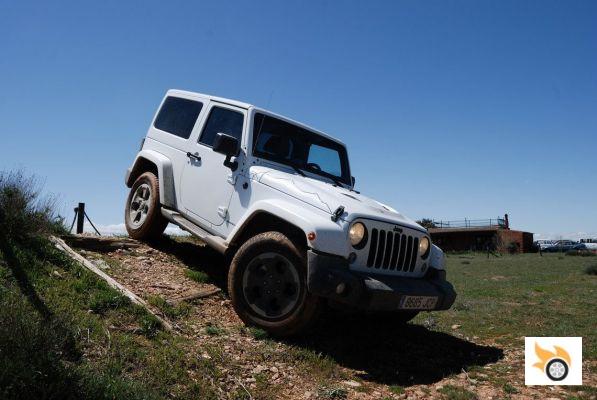
The popularity of SUVs began during the 90's to cover a need, that of those drivers who demanded a solid and "safe" car (that's what most people think, although it has been proved that it's not), like the off-roaders, but with a more urban and asphalt approach instead of a country approach. Until then we can say that form was closely linked to function.
The off-road vehicles were designed for work in the field and had a chassis formed by stringers and crossbars, or ladder. The suspensions were with leaf springs, had four-wheel drive and had a reduction gearbox. These vehicles were tough, designed for working and driving in the countryside, as well as having a large towing capacity and long suspension travel. They were designed not to get stuck on the roads. Progressively, these vehicles were softened resulting in what now proliferates so much.
Today, these "sport utility vehicles" are distinguished by their monocoque chassis and the possibility, for the most part, of equipping them with all-wheel drive. Unlike the classic MPV, these cars can drive more comfortably on rocky or rough roads. If you really want to go off-road, it's better to buy a real off-roader, one of those that are hardly available on the market...
The main basis of the first SUVs was that of a family car with a long wheelbase.
However, the first SUVs were descended from commercial and military vehicles, such as the Jeeps and Land Rovers of World War II. But the first cars of this typology came before Hitler's delusions of grandeur and the invasion of Poland. Let's take a look at some of them:
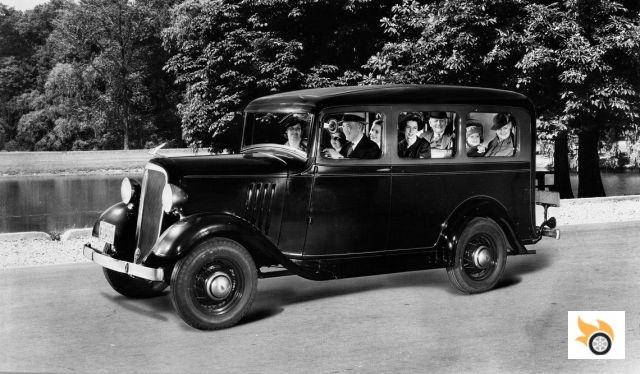
Chevrolet Suburvan Carryall (1935-1940).
First of all, I would like to point out as a curiosity that the name "Suburban" is one of the longest-lived in automotive history, a name that is still used today 82 years later. During the first decades of the last century, travelling long distances was a real via crucis: there were hardly any proper roads (roads, basically) and making long journeys was a real ordeal. Taking into account these claims, Chevrolet created in 1935 the Suburban Carryall, considered the first SUV in history.
That first generation was unconventional as a vehicle that merged the dimensions of a delivery van with the comfort of a car. It had many distinctive features, such as a large number of windows, seating for eight passengers (in 3/2/3 layout) and a power output of 60 hp from a 3.4-litre six-cylinder block. Unlike vehicles of the time, Suburban owners could carry not only passengers, but also a large amount of luggage. They also soon realized that cargo space could be even greater by removing the rear seats. It was sold only in rear-wheel-drive form.
In the years following World War II, its popularity increased considerably because people needed a vehicle with the ability to transport large families. After more than 80 years of life, the Chevrolet Suburban has seen 12 generations and more than 10 million units sold.
GAZ-61 (1938-1945)
The GAZ-61 was an all-wheel drive vehicle (4×4) manufactured by the Soviet company GAZ in 1938 from the body of the GAZ M-21, although its production did not begin until 1940. It was a vehicle capable of climbing slopes with an angle of up to 38 ° and wading through water with a maximum depth of 0.72 meters.
It looks more like an off-roader than an SUV, doesn't it? It started out as a military model but, as time went by (1941), it became a more familiar model, renamed GAZ-61-73. It was capable of accommodating five passengers with enough space to carry Mosin-Nagant rifles in the trunk. With its 85 hp 3.5-litre in-line six-cylinder engine, it was capable of 107 km/h.
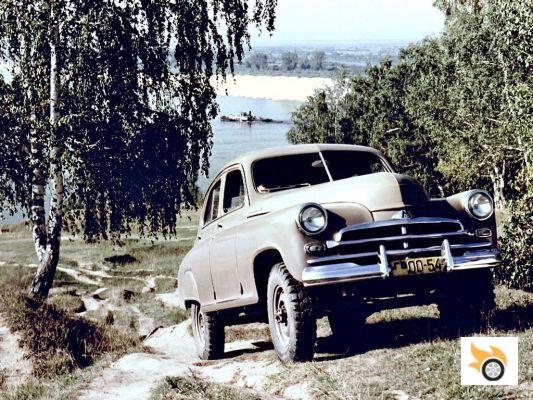
Pobeda GAZ-M72 4×4 (1955-1958)
The Pobeda was the first Soviet car designed after the end of World War II and perhaps the first "modern" SUV in history. And I say "modern" SUV because it was the first mass-produced vehicle with a monocoque chassis and an all-wheel drive system, adapted from the contemporary GAZ-69. Pobeda (Победа), which means victory in Russian, already denotes the prestige of this car. The GAZ factory decided to increase the ground clearance by about 15 cm on one of its most popular vehicles, the M20 (which shared many parts with the 1936 Opel Kapitan/Kadett) due to the poor track conditions and adverse weather conditions in the country.
The Pobeda M-20 gained in size and the Gorky Automobile plant began to manufacture it in large quantities. The standard Pobeda transmission coupled to the front axle of the GAZ-69 was used, with a transfer case and a new and unique rear axle, as it was not used in any other model. The engine was a 51 hp 2.1-litre in-line four-cylinder. It was the ideal vehicle for traversing the vast Soviet plains. In fact, there are still numerous units circulating in ex-Soviet countries and they are increasingly sought after by Western collectors. Only 4,677 units were built during its three years of life.
I have delved into these three models because they have seemed to me the most representative of these first series of SUVs, but there are many more. After these we find the Willys Jeep Station Wagon (1948), International Harvester Travelall (1953), Land Rover Series II 109 (1958), International Harvester Scouts 80 (1961), Jeep Wagoneer (1963), Ford Bronco (1966), Toyota Land Cruiser FJ-55 (1968), Chevrolet Blazer K5 (1969) and Land Rover Range Rover (1970). Since the term "sport utility vehicle" didn't really catch on until the late 1980s, many of these vehicles were marketed as rural.
Let's take a look back at that era. The history of the 1980s was marked by music, movies, television, sports, fashion, and characters that helped to strengthen the entertainment world. Women wore the "balloon" fashions, the imitations of everything Madonna and Cyndi Lauper wore. Artists like Aerosmith, Bon Jovi, Guns N' Roses, Michael Jackson, Prince and Queen emerged. Around the world important events happened, being the tensions between the United States and the Soviet Union one of the most remembered. But let's get down to the nitty-gritty, I'm starting to rave. It is at the end of this period when the SUVs begin to hit hard.
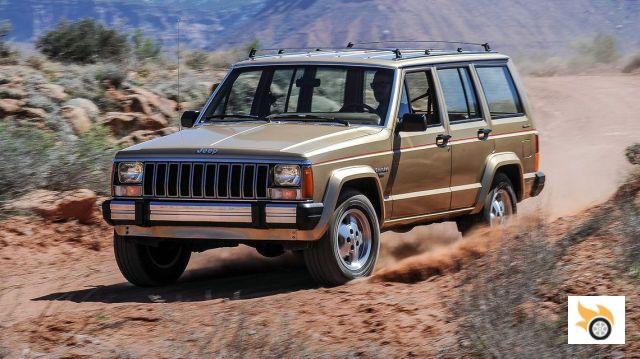
Jeep Cherokee XJ (1984-2001)
Developed under the leadership of American Motors Corporation (AMC), the Cherokee sought to somehow position itself as a replacement for the traditional car, with urban families as its target audience. It was smaller, more manageable and with an interior closer to a car than the Wagoneer, much more clunky and clumsy. However, having all-wheel drive and a more than decent ground clearance, it was perfectly suited for rural areas, still quite popular at the time. It was built on a monocoque chassis and was offered in both five-door and three-door body styles.
Robert Casey, curator of transportation at the Henry Ford Museum, claimed that the Jeep Cherokee (XJ) was the first "sport utility vehicle" in the modern meaning of the term.
With the introduction of more luxurious models and more powerful engines (up to 195 hp), sales of the Cherokee increased dramatically and remained healthy until its retirement in 2001. With this model, the term "sport utility vehicle" was first used in the press. The success of the model led other manufacturers to start copying the same formula. The model was so relevant that designer and motoring critic Robert Cumberford, writing for Automobile magazine, claimed that the Jeep Cherokee (XJ) was one of the twenty most important cars of all time, both for its design and for being arguably the best interpretation of what it means to be an SUV.
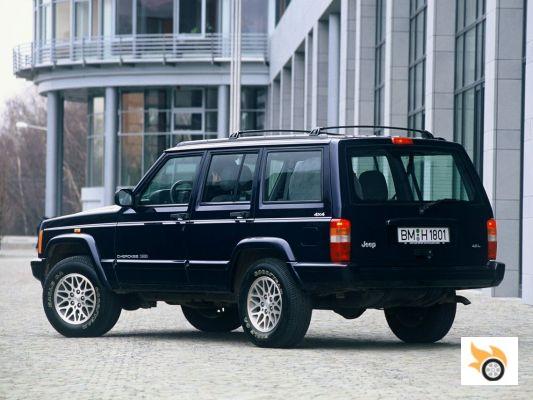
But before we go on to the next one, a little technical aside.
In the 70's the oil crisis hit, first in 1977 and then in 1979, so the price of the barrel increased considerably. This led to make engines less spendy and say goodbye to the great escalation of power that was living especially on the other side of the pond. Basically, what was done was to deflate the power of the engines, making them much more... Homer Simpson, that is to say, lazy. Things were so bad at the time that, to give an example, GM even fitted an inline 4-cylinder, 2.5 litre, 90 bhp engine (Iron Duke) in the iconic Chevrolet Camaro, which took over 20 seconds to do 0-100 km/h! Even school buses overtook these monsters like missiles. But that's a different story.
To regulate fuel economy over the next few decades, the Corporate Average Fuel Economy (CAFE for friends) began to get its hands on passenger vehicles, as Americans call passenger cars. Automakers evaded this regulation by selling SUVs as work or commercial vehicles, and the trick is still in use. Keith Bradsher, business and economics journalist and Shanghai bureau chief for The New York Times, explained the rise of the American Motors SUV by lobbying the U.S. Environmental Protection Agency (EPA) for an exemption from the Clean Air Act. The EPA subsequently designated the Cherokee as a "light truck," and the company marketed the vehicle to everyday drivers. AMC's attempt to skirt the regulations by changing the official definition led to the rise of SUVs as other manufacturers marketed their own models in response to the Cherokee.
And we come to the 1990s, years of proliferation for the SUV market and economic improvement. Technology began to be the basis of many things and we began to see it implemented in our daily lives. Then comes to the market also one of the most relevant SUVs, or more specifically, an "all-terrain vehicle", the RAV4.
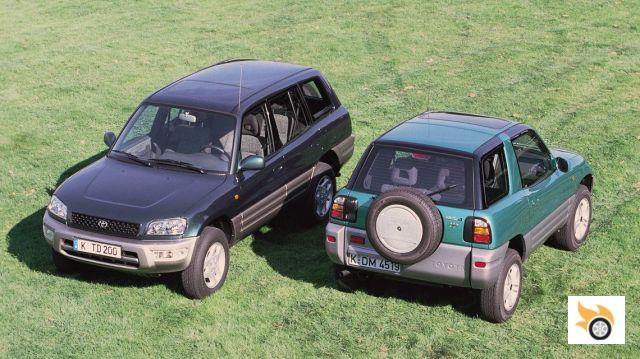
Toyota RAV4 (1994-2000)
As soon as the RAV4 was launched in May 1994, the public instantly had a new option in the range. Toyota had created (or was credited with creating) a different segment to those known so far, that of the compact mixed SUVs, one size smaller. It had four comfortable seats and was built with a touring-type monocoque body, so its dynamic handling was very similar to that of a compact road car. However, if the terrain or weather conditions turned ugly, you had the peace of mind of a high stance, permanent all-wheel drive and enough ground clearance to get by.
RAV4 stands for "Recreational Activity Vehicle 4-Wheel Drive".
It was an immediate success. Initially, planned production was 4,500 units per month. With 8,000 orders received in the first month, production volumes had to be doubled. People loved the look and feel of the RAV4. With unmistakable styling that resembled a small SUV and a 2.0-litre 16-valve engine (129bhp), it had a performance that could hold its own with 11.2 seconds 0-60mph and a top speed of 171mph. At the time, the RAV4 surprised as much as the Renault Espace did years earlier.
SUVs are already beginning to attract the attention of all manufacturers, seeing a very lucrative market where profits per unit sold can be much higher than those of a passenger car. As the premium manufacturers are not stupid, they also wanted to take advantage of the cake. And that's when vehicles like the Cadillac Escalade, Lincoln Navigator, Mercedes-Benz ML or BMW X5 came onto the scene, although these were not the first luxury SUVs.
In 1966, Kaiser Motors built a more upscale version of the Jeep Wagoneer, calling it the Super Wagoneer. It was the first SUV to offer a V8 engine, automatic transmission and several elements of equipment not typical of SUVs of the time: air conditioning, sunroof or vinyl, electric adjustments in the seats ... Its production ended in 1968. Land Rover did exactly the same with the Range Rover of 1970, continuing with the emergence of new competitors that added elements of comfort to models that, from the beginning, were more rudimentary.
At the end of the last century, production of luxury SUVs, especially in the US, increased with the aforementioned Lincoln Navigator (1997) and Cadillac Escalade (1998). These vehicles generated huge profits for the brands, as they were based on the same platforms as their generalist counterparts, Ford Expedition and Chevrolet Suburban/GMC Yukon respectively. Both models are in turn derived from the chassis that Ford and GM use in their pickups, namely the F-Series and Silverado/Sierra. Pickups are especially profitable in the USA as work and leisure vehicles.
Here in Europe, the first luxury SUVs came from Mercedes and BMW (with permission from Land Rover). Then came the Cayenne
Seeing the success of SUVs in the United States, Mercedes-Benz ventured to launch its own model designed to meet the demand of this market. It was 1997 and the model was christened ML (W163), the first SUV of the brand of the star that, how could it be otherwise, incorporated the latest in security, being the first SUV to equip stability control and four airbags as standard. In March 1999 it received the Car of the Year award in Geneva.
BMW launched the X5 (E53) on September 1, 1999, the Bavarian brand's first SUV, although BMW called it SAV (Sport Activity Vehicle). Many people were asking themselves, "A BMW that looks like an SUV? - Ughh, that can't work". Well, it worked, it worked very well. By 23 August 2001, 100,000 units had already been sold, and on 9 June 2005, the 500,000th unit was produced, bringing the total to 616,867 units by the end of production in 2006. It's anyone's guess, but the X5 has been BMW's biggest success story since the 3 Series.
And what about the Porsche Cayenne (2002), described as a betrayal of Ferry Porsche by journalist Manuel Domenech, which not only became a sales success, but saved the sports car brand from a possible end. Michelin had to develop tyres completely adapted to its characteristics, no other tyre on the market could withstand its weight and power. Right now Porsche is an SUV manufacturer that also makes sports cars, more than half of the sales are of Cayenne and Macan.
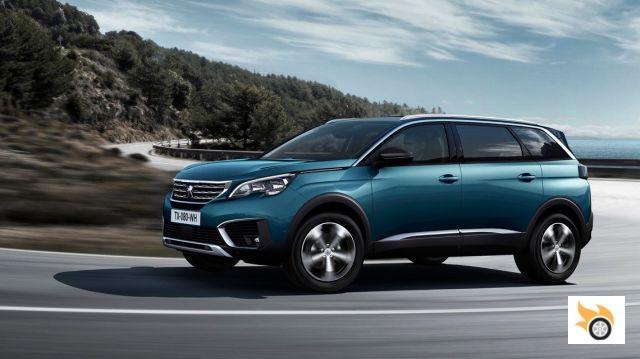
From SUV to crossover and the democratization of the segment
It is at this point that we enter the last stage, well into the 21st century. A new segment with a country look is appearing, the crossover. It is true that we call SUVs to all passenger cars, but it is not so, there is a difference between them. On the website of Peugeot Spain we have for example a small list of the differences between an SUV, a crossover and an off-road. Let's see what it says:
- A 4×4 SUV is prepared to drive on any surface, whether asphalt or mountain, so they have greater weight and strength and reinforced chassis.
- By definition, an SUV is more economical than an off-roader, as an SUV generally consumes less fuel than a 4×4 off-roader.
- This is helped by mixed tyres, which help them to cope more safely on tarmac than an off-roader, and they have off-road capabilities.
- They are easier to drive, since in most cases they do not need the differential lock to adapt to bumpy or slippery terrain.
- Its cabin is more spacious and comfortable (up to 7 seats and modular trunk), ideal for travelling with the family and transporting luggage without worrying about space. The high suspension, high bonnets and reinforced underbody protect it from knocks.
- Crossovers and SUVs are closer to conventional cars than SUVs. They are vehicles that have some of the features of SUVs added to them, but they cannot be driven outside the urban environment without serious mishaps.
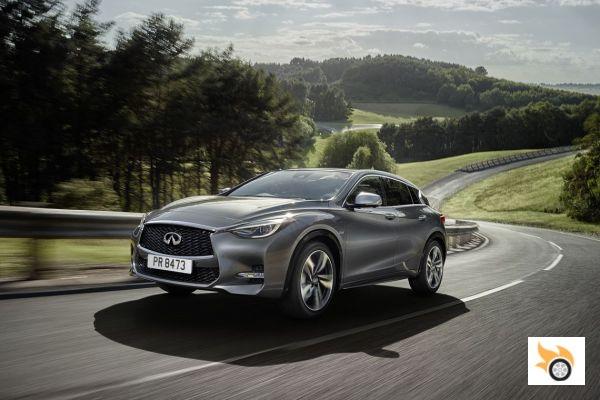
How can we define what a crossover is?
The term itself means crossover, so a crossover is a mixture of several cars, being mostly a compact, an MPV and an SUV. If we are suspicious, we could well say that behind the definition crossover there is always a clear intention of the marketing team on duty to find a justification for their product and, often, to stick to the tree that will best shelter them.
The term crossover began to be used in the industry decades ago, but it was not until a few years ago that it became popular. We could define a crossover as a cross between the traditional car and the SUV. That is, a vehicle that is based on the platform of a car that has been given a few steroids to look more "macho" but, after all, it is still a car.
The theory goes that the crossover was born as soon as the SUV completely lost any country aspirations. In practice, the brand in question decides whether its product is an SUV or a crossover according to its advertising strategy.
Let's look at some early examples:
In truth, the fact that certain cars are called SUV or crossover does not determine their off-road capabilities. However, there are models that have made the crossover appellation their own and are very suitable for off-road use, with the possibility of being fitted with all-wheel drive and a good mixed tyre that, with its grip and clearance, which is still higher than that of a traditional passenger car, can afford certain luxuries in the countryside.
On the other hand, there are also others who have even given up the possibility of equipping all-wheel drive. Peugeot, for example, is betting heavily on its Grip Control, an electronic system that optimises traction in low grip conditions, but without using an all-wheel drive system, only on one axle (normally the front).
But who was the precursor of this terminology? I'm sure the vast majority of people in the know are thinking of the Nissan Qashqai right now. That's partly true, but it's not "The Truth". There was another car around the same time as the birth of the Japanese crossover that had similar ingredients, but with a completely different outcome. That car was the Dodge Caliber.
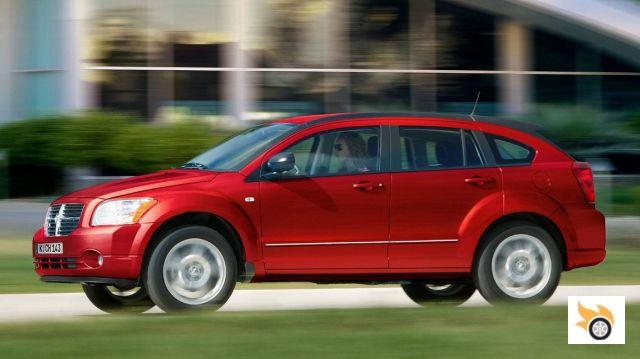
When crossover sales soared: Dodge Caliber and Nissan Qashqai
The Dodge Caliber was born out of the Daimler-Chrysler group's need to replace the declining Dodge Neon, a compact sedan that, in 2005, after ten years in production, died a silent death. Dodge needed a global car, so it had to take into account the tastes of each market. Europe wanted a traditional five-door compact, while major markets like the U.S. and China were looking for that "SUV style," not to mention that the minivan format still had a good following. The end result was a sort of crossover that was presented at the 2005 Geneva Motor Show as a prototype and at the 2005 Detroit Motor Show as a production model.
If one looks and compares the timing of the Qashqai (prototype at the 2004 Geneva Motor Show and production model at the 2006 Paris Motor Show, before going on sale as early as 2007), one can see huge similarities and parallels. In fact, Nissan also had a huge problem in the C-segment, with an Almera that was unable to sell as well as its rivals, and trying this compact crossover with SUVs and MPVs seemed like a good way to fight back with a different argument.
The Caliber was an economical car for the size it was, and here in Spain it was sold with the "almighty God-lord" and praised (at the time) Volkswagen's 2.0 TDI 140 hp. However, its poor interior quality was not at all appreciated on this side of the pond, which was a serious failure on Daimler-Chrysler's part considering that the interior is a key point for European buyers. In the U.S. things didn't go much better either as it didn't have a clear position in the market. For American consumers it was halfway between a sedan and a "city car", which resulted in rather mediocre sales. That coupled with a tuning focused too much on comfort (almost as if it were a boat), resulted in a car whose original concept was quite good, but its disastrous execution condemned him to the abyss.
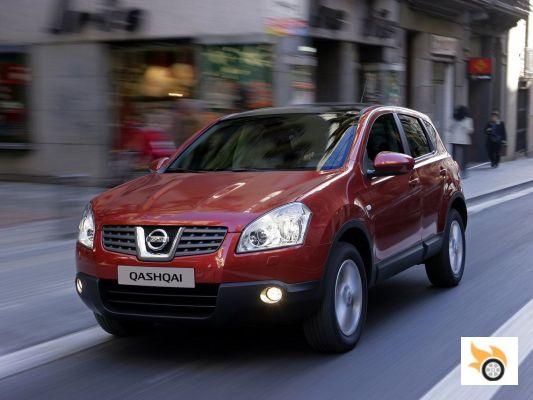
On the other side we have the Nissan Qashqai, a clear bestseller. Relying on Renault's Scénic and Mégane platform (as well as much of its mechanicals), the Qashqai arrived to replace the Almera along with the Tiida, a bland and insipid car, by the way. Although it was viewed with scepticism by the industry, it was an unparalleled sales success: 1.65 million first-generation Nissan Qashqai were built in 7 years of production, and its second generation has become the most successful car in Nissan's European history. In just 10 years, the Qashqai managed to surpass the 2.37 million units of the Nissan Micra, a model that was in production for 30 years. That's almost nothing. Unlike the Caliber, the Qashqai was a well-executed product that has led to success.
Nor should we forget that SUV fever is also affecting the traditional segments. There we have the family SUVs (Peugeot 508 RXH, Audi A6 Allroad), compact SUVs (Volvo V40 Cross Country, DS 4 Crossback), urban SUVs (Hyundai i20 Active, Volkswagen Cross Polo...) and now even saloon SUVs (Volvo S60 Cross Country and Qoros 3 GT).
Grosso modo they are just the same cars as in their normal versions, but with an off-road look. Having a few millimetres more suspension and fake plastic fenders doesn't give better results on or off road. They are just kits that manufacturers offer for a sum of money that is not justified but that customers are willing to pay for them. With very few changes you can make an already amortized model attract more buyers, even invite those who are undecided between a car and an SUV to consider other alternatives. It's still a car that has barely gained any country skills, but its aesthetics, for many, have improved.
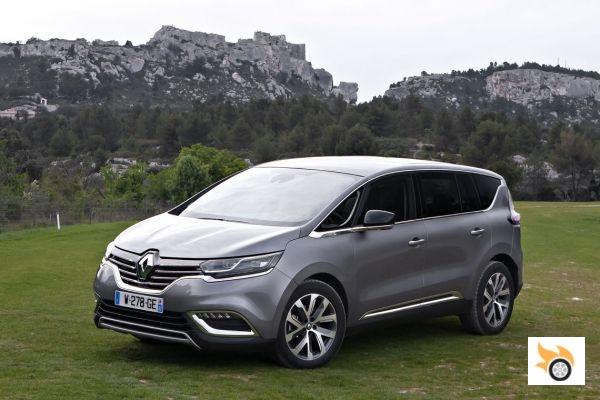
The SUV trend is so strong that even Renault, who popularised the MPV concept, now considers the Espace a crossover. Food for thought...
Nowadays, although some brands differentiate between what is an SUV and what is a crossover, there isn't really that much difference as it's more marketing than anything else. Most vehicles of this type are based on a passenger car platform, have a monocoque chassis and, for the most part, with two-wheel drive and the option of four-wheel drive (and if that). It's good to have each car in its own category, but many are supplemented or create mixed concepts: there are SUVs, SUV coupes, convertible SUVs, coupe saloons...
Some say that we SUV detractors have lost, and that they already enjoy full social acceptance. The market is becoming saturated with a wide range of models, in segments and sub-segments, and the designs seek to differentiate themselves from the rest: some go for aggressiveness, others for class, others for luxury, others for technology... From segment A with the basic crossovers to the luxury segment F, there is practically an SUV to suit all tastes...
In the end, the decision to buy is up to you.

























